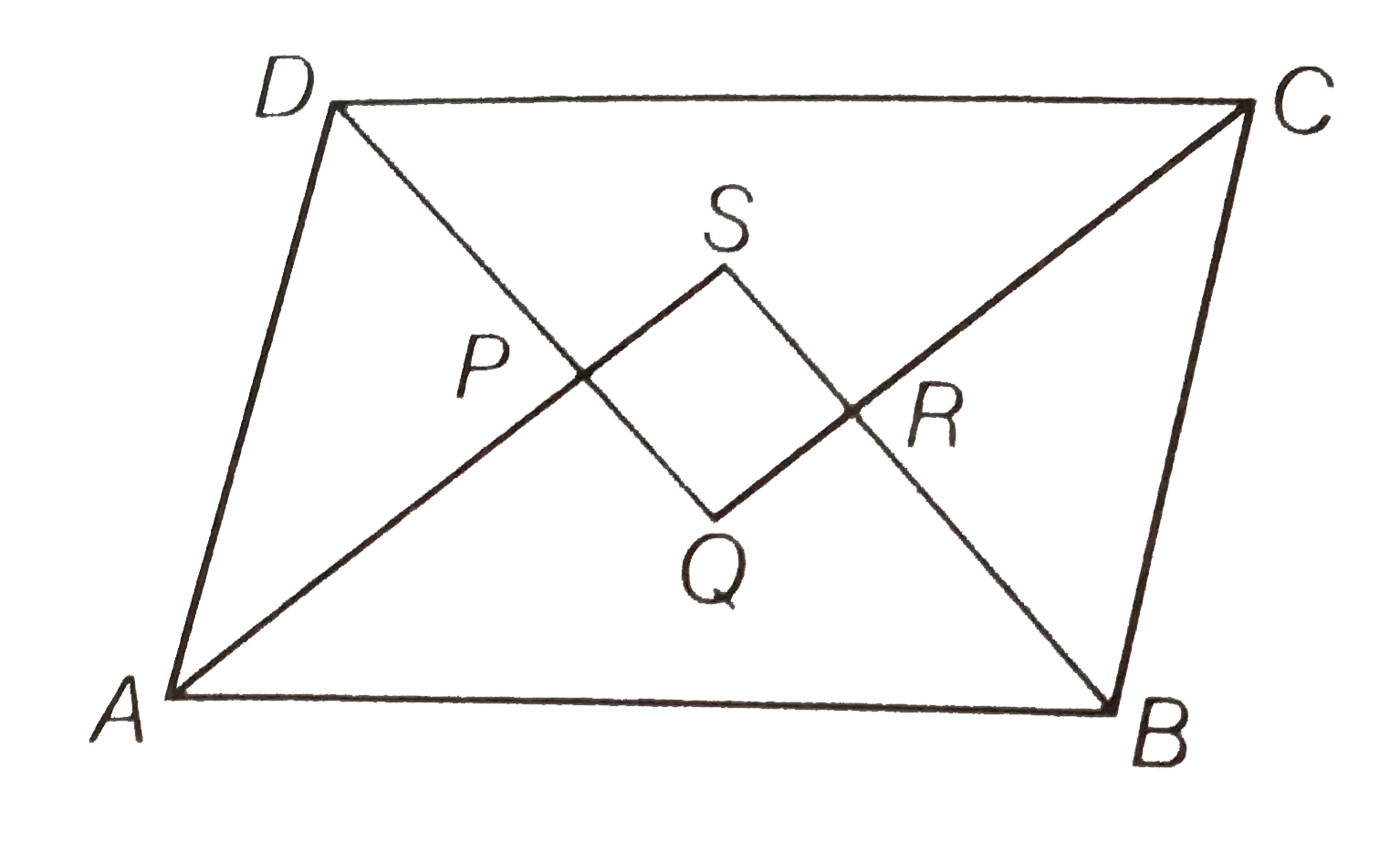Show that each angle of a rectangle is a right angle.
To show that each angle of a rectangle is a right angle, we can follow these steps:
1. Define the Rectangle:
Let ABCD be a rectangle where A, B, C, and D are the vertices of the rectangle.
2. Assume One Angle:
Assume that angle A (∠A) is 90 degrees. We need to prove that all other angles (∠B, ∠C, and ∠D) are also 90 degrees.
3. Properties of a Rectangle:
Recall that a rectangle is a special type of parallelogram. Therefore, the opposite sides are equal and the opposite angles are equal.
4. Identify Parallel Sides:
In rectangle ABCD, the sides AD and BC are parallel, and the sides AB and CD are also parallel. This means:
- AD || BC
- AB || CD
5. Use Transversal Properties:
Since AD is parallel to BC and AB is a transversal line, we can use the property of angles formed by a transversal. The sum of the angles on the same side of the transversal is 180 degrees.
6. Apply the Angle Sum Property:
Since we have assumed that angle A is 90 degrees, we can write:
∠A+∠B=180∘
Substituting the value of angle A:
90∘+∠B=180∘
7. Solve for Angle B:
Rearranging the equation gives:
∠B=180∘−90∘=90∘
8. Use Opposite Angles Property:
Since ABCD is a parallelogram, opposite angles are equal. Therefore:
∠A=∠Cand∠B=∠D
Since we found that ∠A = 90° and ∠B = 90°, we can conclude:
∠C=90∘and∠D=90∘
9. Conclusion:
Thus, we have shown that all angles in rectangle ABCD are equal to 90 degrees:
∠A=∠B=∠C=∠D=90∘
Final Statement:
Therefore, each angle of a rectangle is a right angle.
---
Let ABCD be a rectangle where A, B, C, and D are the vertices of the rectangle.
Assume that angle A (∠A) is 90 degrees. We need to prove that all other angles (∠B, ∠C, and ∠D) are also 90 degrees.
Recall that a rectangle is a special type of parallelogram. Therefore, the opposite sides are equal and the opposite angles are equal.
In rectangle ABCD, the sides AD and BC are parallel, and the sides AB and CD are also parallel. This means:
- AD || BC
- AB || CD
Since AD is parallel to BC and AB is a transversal line, we can use the property of angles formed by a transversal. The sum of the angles on the same side of the transversal is 180 degrees.
Since we have assumed that angle A is 90 degrees, we can write:
∠A+∠B=180∘
Substituting the value of angle A:
90∘+∠B=180∘
Rearranging the equation gives:
∠B=180∘−90∘=90∘
Since ABCD is a parallelogram, opposite angles are equal. Therefore:
∠A=∠Cand∠B=∠D
Since we found that ∠A = 90° and ∠B = 90°, we can conclude:
∠C=90∘and∠D=90∘
Thus, we have shown that all angles in rectangle ABCD are equal to 90 degrees:
∠A=∠B=∠C=∠D=90∘
Therefore, each angle of a rectangle is a right angle.
Topper's Solved these Questions
- QUADRILATERALSBOOK - NCERT ENGLISHCHAPTER - QUADRILATERALSEXERCISE - Exercise 8.2
7 Videos
- QUADRILATERALSBOOK - NCERT ENGLISHCHAPTER - QUADRILATERALSEXERCISE - Exercise 8.2
7 Videos
- PROBABILITYBOOK - NCERT ENGLISHCHAPTER - PROBABILITYEXERCISE - SOLVED EXAMPLES
10 Videos
- STATISTICSBOOK - NCERT ENGLISHCHAPTER - STATISTICSEXERCISE - Exercise 14.2
9 Videos
Similar Questions
Each of the four angles of a rectangle is a right angle.
View SolutionIf one of the four angles formed by two intersecting lines is a right angle, then show that each of the four angles is a right angle.
View SolutionSay True or False :(a) Each angle of a rectangle is a right angle.(b) The opposite sides of a rectangle are equal in length.(c) The diagonals of a square are perpendicular to one another.(d) All the sides of a rhombus are of equal length.(e) All the sides of a parallelogram are of equal length.(f) The opposite sides of a trapezium are parallel.
View SolutionUsing vectors, prove that angle in a semicircle is a right angle.
View SolutionEach of the angles of a square is a right angle and each of the four sides is of the same length.
View SolutionProve that the quadrilateral formed by the bisectors of the angles of a parallelogram is a rectangle.

View SolutionProve that the quadrilateral formed by the bisectors of the angles of a parallelogram is a rectangle.

View SolutionDetermine the measure of each of the equal angles of a right-angled isosceles triangle.
View SolutionFind the measures of each of the two equal angles of an isosceles right-angled triangle.
View SolutionTwo adjacent angles are equal. Is it necessary that each of these angles will be a right angles ? Justify your answer.
View Solution
